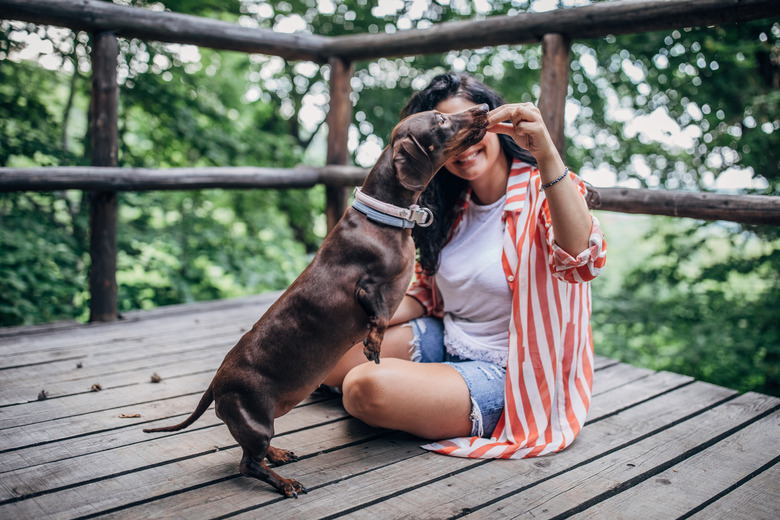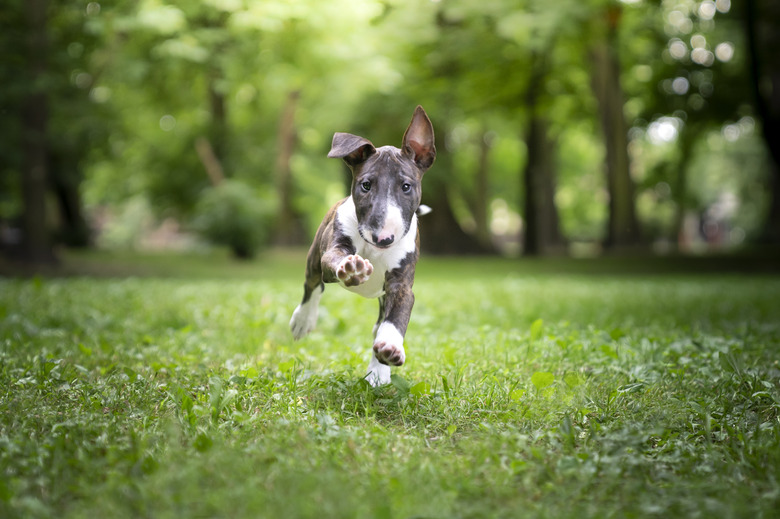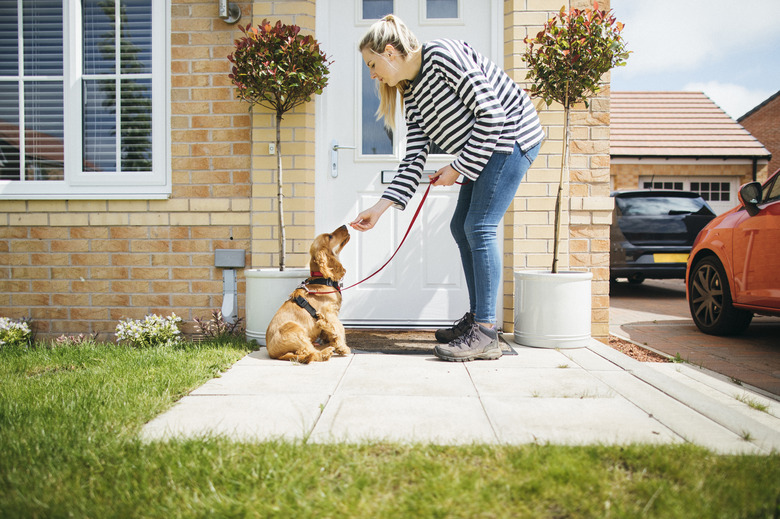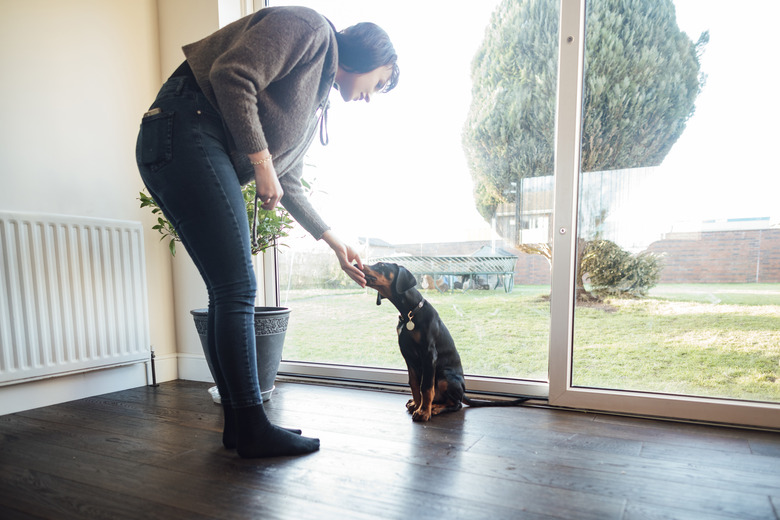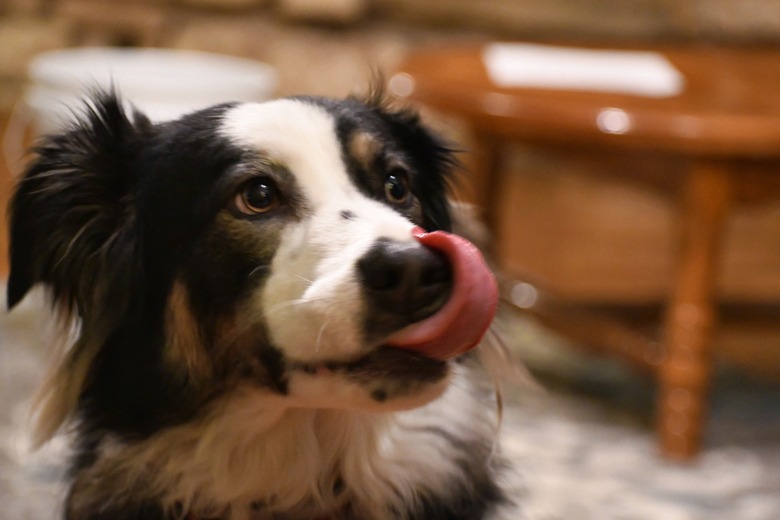The Beginner's Guide To Dog Training Terminology
When you're first getting started with dog training, it can be difficult to make sense of the different phrases and terms that dog trainers and other training buffs casually throw around in conversation. If you're trying to learn how to train your dog, it can be frustrating to not fully understand what the different terms mean.
In addition, not fully understanding the different aspects of dog training can make it challenging for you to put those training techniques into practice with your dog. Here are the definitions of some of the most common terms and concepts utilized in dog training. As always, if you are confused or aren't sure about a specific concept it's always a good idea to connect directly with a qualified, certified dog trainer virtually or in your local area to support you on your dog training journey!
Common dog training terms to know
Common dog training terms to know
Aversive: Aversive refers to doing something that is uncomfortable or unpleasant to the dog with the theoretical idea of forcing the dog to perform a specific behavior. Aversives have been shown to be harmful for dogs, and to the learning process.
Behavior: In dog training, behavior refers to anything that a dog does either naturally or cued to perform.
Behavior chain: Behavior chains are multiple unique behaviors performed in a specific order, that is then rewarded at the end. Dogs learn each individual part of a behavior chain separately, and then put all the pieces together.
Capturing: Capturing means marking and rewarding a behavior that the dog is doing naturally (such as sitting or lying down). It is one way of teaching a behavior in dog training, with luring and shaping (defined further down) being others.
Criteria: Criteria refers to the specific, clearly defined behavior or traits a trainer is looking for when teaching a given behavior. The trainer would click or mark as soon as the criteria is met. For example, when teaching a dog to target your hand, the criteria might be "the dog's nose touches my open palm."
Correction: Correction references applying some sort of physical or verbal punishment to a dog, with the goal of stopping a behavior or making doing that behavior unpleasant.
Clicker: A small, usually plastic box with a metal interior strip that when pressed produces a clicking sound. Clickers are used as part of positive reinforcement training to improve communication between dog and handler. The clicker produces a consistent sound which can be conditioned by immediately pairing with a reward to signal to the dog that a specific behavior was desirable. A clicker is a kind of marker (defined further down).
Cue: In dog training, a cue references any instruction either verbal or physical that is given to a dog instructing them on what behavior they should perform next. Cues allow dog owners to effectively communicate with their dogs.
Counterconditioning: Counterconditioning allows people to shift the emotional response a dog has to a given trigger or environment from negative to positive. Counterconditioning works by pairing the trigger with a positive reward like a food treat. Over time the dog will associate the now former trigger with the positive reward.
Correction: A physical or verbal reprimand to a dog with the intended goal of stopping an unwanted behavior and preventing that behavior from being repeated. In modern dog training, we strive to avoid corrections.
Desensitization: Desensitization refers to the slow process of shifting a dog's emotional response to a stressor or trigger through slow, careful, intentional exposure, and counterconditioning. (Often used in the phrase "desensitization and counterconditioning.")
Dog sports: Dog sports refers to a wide variety of activities that you can do with your dog either recreationally or competitively. Examples of common dog sports include: Agility, Obedience, Scent Work, Rally, Barn Hunt, and Dock Diving.
Force-free: Force free dog training is an approach under the umbrella of positive reinforcement training. With force-free training approaches no punishment or correction is utilized when teaching dogs new skills or working with and handling dogs. This includes refraining from physical corrections with a leash or verbal corrections such as scolding or yelling. The goal with force-free training is to give dogs the ability to make decisions.
Fear free: Fear Free is a set of principles that center on making sure that dogs feel comfortable, safe, and not stressed during an interaction. Fear free is a certification that veterinarians, dog trainers and other dog professionals can earn. This is a framework of care that then is utilized when looking at how a professional will interact with an animal making all interaction and low stress as possible, taking into account environmental and handling interventions that can keep dogs feeling comfortable.
Flooding: Dogs experience flooding when they are overwhelmed with too many stressful experiences in quick succession. Dogs who experience flooding become so overwhelmed by the overexposure to their triggers that they shut down. This can lead to an increase in stress and behavior issues.
Luring: Luring means using an object the dog wants (often food) to encourage them to move in a certain way. Luring does not mean placing hands on the dog, but instead placing something in front of them (such as food in front of their nose) to guide them into moving into a position (such as into a "sit").
LIMA: LIMA stands for Least Intrusive, Minimally Aversive. This is a training framework adopted by many dog trainers, and dog training organizations. It's a code of conduct that centers on meeting a dog's primary needs and minimizing any aversive approaches while training.
Marker/Marker word: A marker is a signal to your dog that they have done the correct thing. Use of a marker with training helps dogs to understand more clearly what is being asked of them. Dogs understand the marker because it is paired with a reward like a treat or play. Common markers are the use of a clicker, or a word like "yes." The marker should be used immediately when a dog does a desired behavior and should always be followed by a reward.
Management: In dog training, management involves setting your dog up for success by curating an environment where dogs aren't put in positions where they can rehearse the behaviors that are problematic or unwanted. By preventing dogs from rehearsing the behavior, you can decrease the likelihood of the behavior repeating.
Negative Punishment: One of the four quadrants of learning under operant conditioning is negative punishment. With negative punishment something the dog wants is removed in response to their behavior with the idea that in the future the dog won't do the undesirable behavior to avoid the thing of value being taken away.
Negative Reinforcement: Another of the four quadrants of learning under operant conditioning is negative reinforcement. With negative reinforcement dogs are taught to do a behavior to make something they find unpleasant or annoying stop/be taken away.
Operant Conditioning: In dog training, operant conditioning refers to a dog who is learning based on what happens after a behavior takes place. A dog learns if they do desirable behaviors there are positive rewards, so they are likely to increase that behavior. However, if a dog does something and the response to that behavior is something they don't like they are less likely to repeat that behavior in the future.
Positive Punishment: Another of the four quadrants of learning under operant conditioning is positive punishment. Dogs learn not to do unwanted behavior because they experience a punishment (yelling, collar correction etc.) for doing the unwanted behavior.
Positive Reinforcement: Another of the four quadrants of learning under operant conditioning is positive reinforcement. With positive reinforcement, dogs learn by something desirable occurring in response to their behavior, such as a reward being given. This is the quadrant of learning we want to focus on when training our dogs. Positive reinforcement is sometimes abbreviated as "R+."
Reinforcement: In dog training, reinforcement is used to mean anything given to your dog: treats, praise, play, etc. when they do a desired behavior, or correctly respond to a cue. The reinforcement you use may differ depending on what you are training, and your individual dog's specific preferences. Reinforcement is how we "pay" our dogs for a job well done.
Rate of reinforcement: The rate of reinforcement means how often your dog is being given reinforcement as part of a training session. When training a new skill, you might reward your dog after each repetition which would be a high rate of reinforcement. With a skill your dog confidently knows, you might reward every few repetitions so it would have a lower rate of reinforcement.
Reactive / Reactivity: Reactivity refers to a dog who is experiencing an overarousal about a trigger, or stimulation. Dogs displaying reactivity are stressed or fearful and are barking/lunging to try to create distance from whatever they find so stressful.
Redirecting: Redirecting references shifting your dog's attention away from a distraction or stimulus. This is useful for helping your dog to focus when around distractions. Redirecting your dog's attention away from triggers is also helpful for training.
Release cue: A release cue is a verbal or visual signal your dog has been trained to understand means that they can freely move for example if they have been sent to their bed, or to end a stationary behavior like a stay.
Shaping: Shaping means building a behavior by rewarding the dog for "approximations" of that behavior. This means that they do not have to perform the complete behavior in order to get the reward (at first). Instead, we reward small steps toward the behavior, with the goal of achieving the complete behavior ultimately.
Stimulus: In dog training, stimulus refers to anything: sound, light, movement etc. which elicits a response from a dog.
Socialization: Socialization in dog training is in reference to a specific time for young puppies, before 14 weeks when they can be gently introduced to other dogs, people, and other new experiences. The goal of socialization is to help puppies to develop positive associations with novel experiences, people, and other animals. Experiences that take place during this special socialization period of puppyhood will have a significant impact on a dog's temperament for the rest of their life.
Stressor: A stressor is a situation, event, environmental experience, or training method which causes stress/distress to a dog in general, or while training.
Stress signals: Stress signals are ways that dogs use their body to communicate discomfort, anxiety, or stress. Some common stress signals dog owners should walk for are panting, pacing, yawning, and lip licking.
Target: Target or target training is a training technique where dogs are taught to touch a part of their body such as their nose or feet to a part of your body such as your hand, or an object like a target disc. Target training can be utilized for a variety of training goals from helping with grooming, to helping work through advanced skills.
Trigger: Although triggers can technically be positive or negative, in most instances when the term trigger is used in dog training it is in reference to something that is causing your dog stress or anxiety. Common triggers for some dogs include the sight of another dog, or a new/strange person.
Trigger stacking: Trigger stacking is when your dog experiences multiple triggers or stressors within a short period of time. Dogs who experience trigger stacking become overwhelmed, and you may see an increase in undesirable behaviors, or your dog may appear shut down.
Threshold: Threshold refers to the distance from a trigger your dog can be without responding to the presence of the trigger. Keeping a dog "under threshold" is desirable for training and means a distance where your dog is aware of the presence of the trigger but is not stressed or anxious about it. This is the distance where effective learning can take place.
There are still many other terms and concepts to learn, but don't worry if you can't remember them all! Your dog trainer can help you parse through difficult concepts, and you can always refer back to this list for help. In the meantime, love for your dog and a desire to help them learn are all you need!
